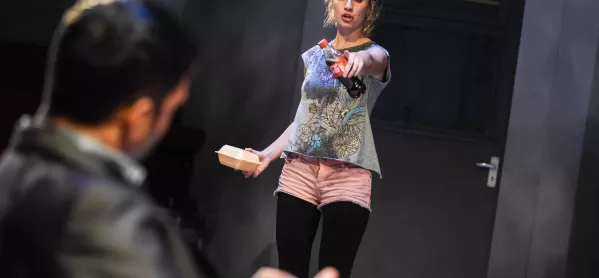Last week, a gang of six people were convicted over a string of sexual assaults against teenage girls in Rotherham. Just one day later, Dame Janet Smith published her report into Jimmy Savile and the BBC.
High-profile cases like these give the impression that the dangers of child sexual exploitation are well known. But these stories do not mean that awareness has filtered down to those who need it most: the vulnerable young people who may be at risk.
“Child sexual exploitation is a huge problem across the UK, and all those who work with children, including teachers, need to be more aware of the issues and warning signs,” says Peter Grigg, director of external affairs at The Children’s Society, one of the UK’s charities fighting child sexual exploitation.
“In just one year, an estimated 16,500 children and young people have shown warning signs of being at risk of this horrific abuse and over 2,400 were sexually exploited.”
The Children’s Society has worked with the Hampstead Theatre on a hard-hitting production which dramatises the issue. Recently streamed online for free, Firebird is now showing in London’s West End.
Tips for teachers
The strong themes of the play mean that it is only suitable for older students, but teachers of all age groups can help to eliminate the disconnect between what we see in the media and the realities of abuse by discussing the issue with pupils. Understandably though, it is not an easy subject to approach.
Carly Adams is an area manager for The Children’s Society, who oversees services for young people at risk of sexual exploitation, trafficking and going missing across London. She gives the following advice for teachers who are talking to young people about sexual exploitation:
- Start with consent
Young people need to understand what consent is and what things might impact on their ability to give true consent. Introduce the idea of power and control to the discussion. Explain the importance of having the power to choose in all of our relationships - whether with partners, friends or family. Nobody should ever feel pressured to do something they are not comfortable with.
- Don’t ignore peer-to-peer exploitation
This is the type of exploitation that teachers are often most likely to observe. Look out for young people sharing explicit images and help them to understand the consequences and impact of these being shared without consent − for both those in the image and for those sharing the images. Ask them to consider how the person in the image would feel about their image being shared and what impact it might have.
- Try not to introduce blame
Even when discussing peer-to-peer exploitation, remember that both parties are children and you should treat them as children first. It is important that students feel they will be believed if they come forward to speak about these issues. Treat this as an opportunity for education, not for blame.
- Keep young people’s strengths in mind
Teachers need to have an awareness of the vulnerabilities of different children. Some may be resilient in one way but not in another, often depending on their past experiences. Understanding the impact of trauma on behaviour can help you to see the presentations of young people in a different way and might change the way you respond to them. Specialist support can be beneficial here.
You can find out more about how to spot the signs of abuse and what to do if you think a child might be at risk in The Children’s Society’s online guide: Knowing the signs of child sexual exploitation.
This is the first in a series of “How to...” blogs. Look out for them every Thursday. The next instalments will be:
10 March: How to reach out to teens with problem skin
17 March: How not to lose a child on a school trip
24 March: How to spot a problem reader
Want to keep up with the latest education news and opinion? Follow TES on Twitter and like TES on Facebook




